How are wooden cutting boards treated before use?
It is very important to properly treat a wooden cutting board before use - this will extend its service life and guarantee the safety of an item that is constantly in contact with food. For processing, large manufacturers of kitchen utensils recommend special homemade oils. But they are expensive and not always available for sale. Let's figure out what you can use to coat a new board at home and how to carry out the treatment correctly.
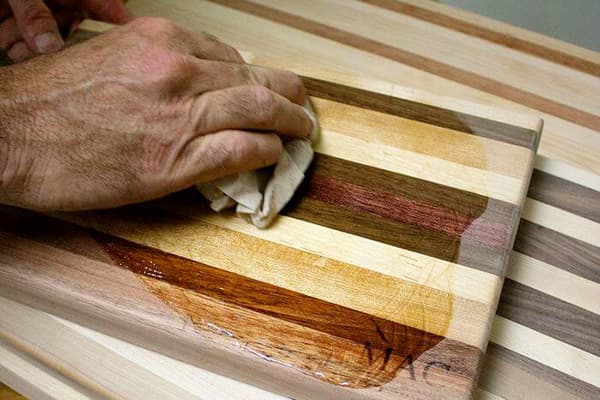
Why is processing needed?
During operation, the cutting board is subjected to enormous loads. It is scratched by knives, water, juice from cut foods, blood, and also cleaning agents used to wash dirt off the board get into the pores of the wood. Therefore, the service life of untreated wood is no more than a year. At the same time, boards made of beech, birch, pine, and oak are not cheap.
During processing, the oil fills the natural pores of the wood. This solves the following problems:
- The development of unwanted microorganisms in the tree: mold fungi, putrefactive bacteria, etc. Microorganisms that settle on the board can not only spoil food, but also get into the food, causing health problems. Therefore, treatment is necessary to make the board safe to use.
- Excessive swelling and deformation of wood from water. This problem is especially relevant for plywood cutting equipment.Penetrating between the layers of veneer, moisture causes delamination. Impregnation protects the pores from water entering, preventing deformation.
- Chips and cracks. When wood dries out, it becomes brittle. Protective impregnation prevents moisture from completely leaving the pores.
That's why kitchen utensil manufacturers almost unanimously recommend treating cutting utensils.
Primary processing must be carried out immediately after purchase. Even washing the board once will saturate it with water, and the protective composition will “lock” the water into the pores. Such a board will be much heavier, and it is excellent for the development of putrefactive bacteria.
Treating the board with oil
First of all, the board must be inspected to understand how the wood fibers are arranged. Impregnation must be applied along the fibers.
Based on their structure, wooden products are divided into several categories:
- Made from cross cuts of wood. This end board is easily recognized by its pattern, reminiscent of growth rings on a stump. End boards are heavier and stronger, and their price is usually higher than other varieties.
- Boards made from longitudinal cuts are called side boards. They are lighter and cheaper than end ones. On them, the fibers form parallel lines running across the movements of the knife during operation.
- Set products, or Butcher Blocks. They are glued together from small blocks made from end grain wood.
Having decided on the type of product, select the appropriate impregnation. These are either mineral or vegetable oils.
Vegetable oils
Traditionally, all peoples used oils obtained from plants to process wood:
- olive,
- sunflower,
- flaxseed,
- sesame,
- grape seeds, etc.
However, today vegetable oils cannot be called ideal for processing cutting boards. They have two significant disadvantages:
- Vegetable oil will go rancid over time. Butyric acid bacteria, eating the nutrients in the oil, produce butyric acid, a substance with an unpleasant odor and bitter taste. Therefore, over time, a product impregnated with a natural composition will begin to smell unpleasant.
- Long drying time. Within 2–3 days, the treated board will stain everything it comes into contact with. Considering that the impregnation is applied in 3–5 layers, the processing process will last for several weeks.
If you definitely want to use vegetable oil, choose flaxseed oil. It practically does not deteriorate.
Another type of impregnation is drying oil. This is vegetable oil cooked with special additives that speed up drying. But even it takes a very long time to dry.
Mineral oils
Petroleum products are becoming an alternative to vegetable oils. They are called mineral oils. Not all mineral impregnations are suitable for treating kitchen utensils. It is worth choosing either special liquids for treating cutting boards (for example, this composition is sold at IKEA) or Vaseline oil. The last option is the most accessible - it can be bought at any pharmacy.
To give the oil the optimal consistency, it is mixed with natural beeswax. The base is heated in a water bath, and then small (cherry-sized) pieces of wax are added. The mixture is stirred until homogeneous.
The optimal ratio of oil and wax is 4:1.
The prepared mixture is cooled to room temperature. Now everything is ready to go.
How to properly impregnate?
Before starting work, the board is thoroughly dried and cleaned of roughness. For polishing, use fine-grain sandpaper (No. 400, No. 600).
To work, you will need a brush to apply the impregnation, as well as a paper towel to remove excess.
The composition is poured onto the board in small portions and carefully distributed with a brush (a cotton swab will also work) along the fibers. All sides must be processed, including the side edges. After complete drying, the treatment is repeated (up to 5 times in total).
Treated boards do not absorb foreign odors and last several times longer than untreated boards. It is only important not to forget to repeat the treatment 2-3 times a year.
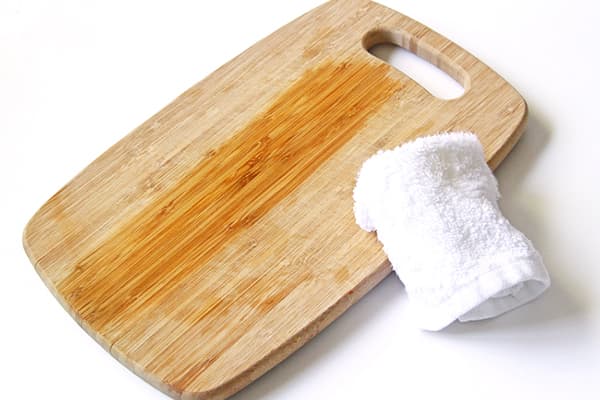
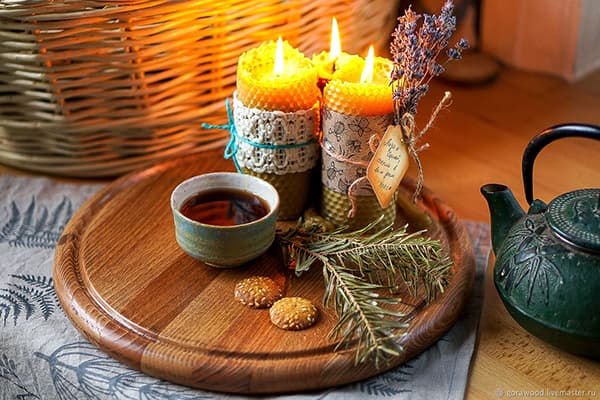
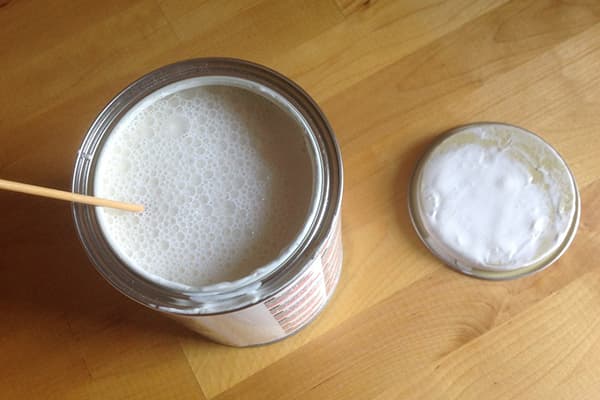
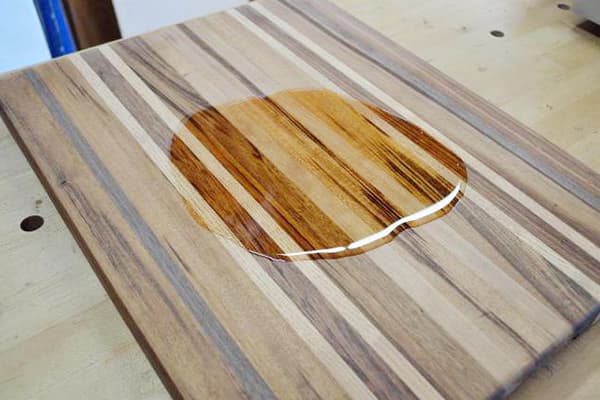
It would be good to heat the board before impregnation. First...
The wife does not recognize any boards other than wooden ones. But they cost a lot, and they don’t last long. I treated the new board with Vaseline and wax, I hope it will last longer.